Abstract
Prevention of low bone mass is important to reducing the incidence of osteoporotic fractures. This paper shows that, in rats, bone mass can be increased by feeding habits per se. Using six-hourly urinary excretion of [3H]tetracycline from prelabeled rats to monitor bone resorption, we previously found a peak of bone resorption following food administration. We now demonstrate that dividing the solid and liquid intake into portions blunts this peak and leads to a decrease in 24-h bone resorption to the level observed in thyroparathyroidectomized animals. Calcium balance increases and, when such feeding schedules are imposed for 30 d, bone mass increases. Dividing the intake is not effective in thyroparathyroidectomized animals, indicating the importance of PTH and/or calcitonin. Administration of calcitonin inhibits practically only the peak of bone resorption, suggesting that it is osteoclast mediated. In contrast, treatment with a bisphosphonate reduces basal bone resorption without a specific effect on the peak, indicating a fundamentally different mechanism of action. This is also supported by the finding that their combined effects are additive. Whether bone mass in humans is also under the control of dietary habits is not known. If so, an increased meal frequency may be used to prevent osteoporosis.
Full text
PDF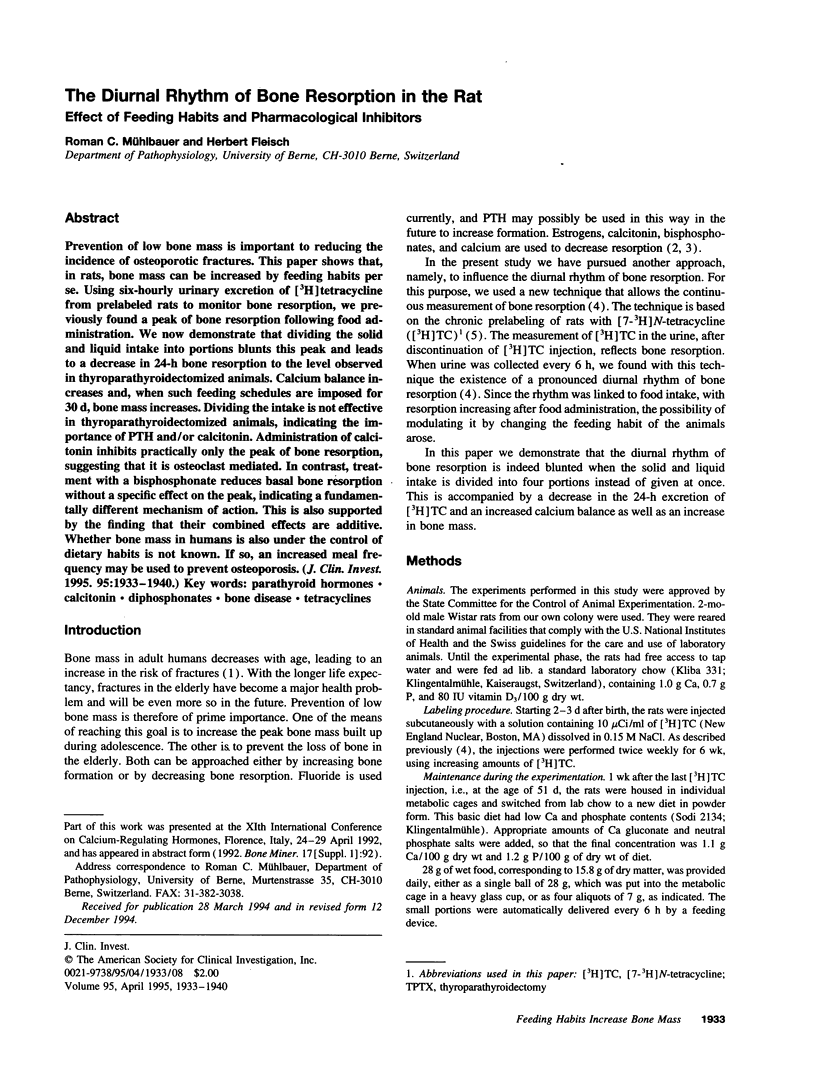
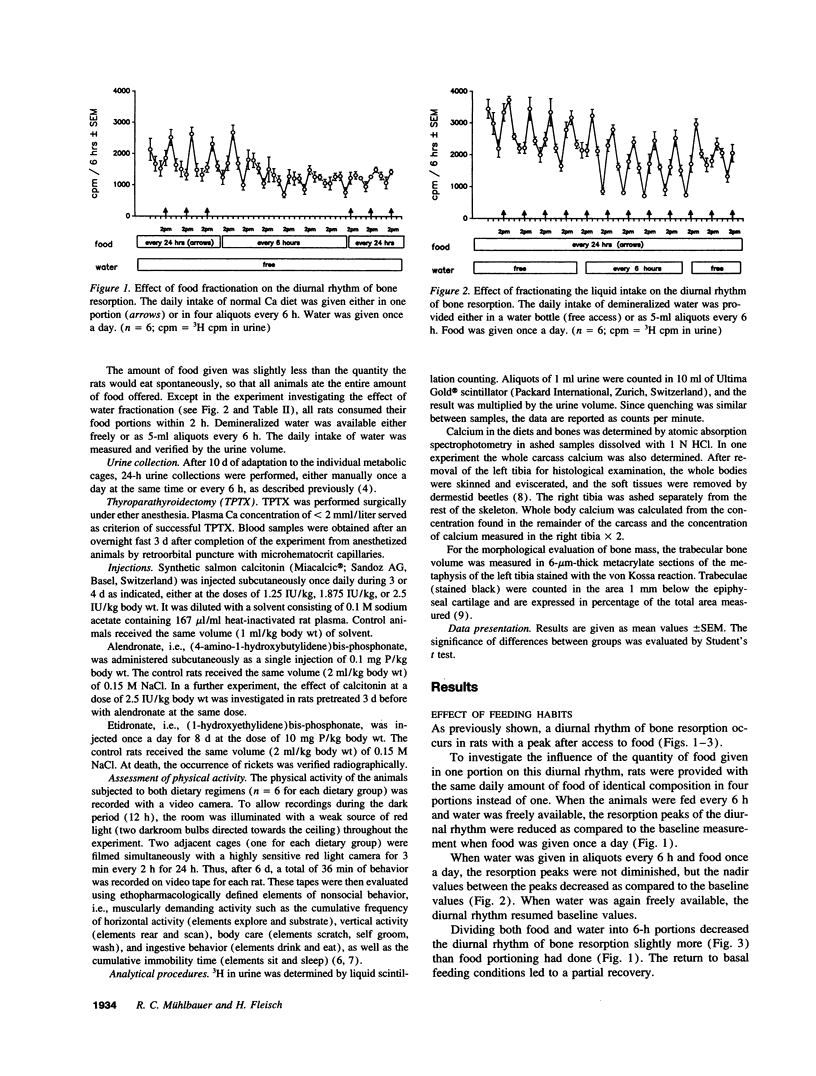
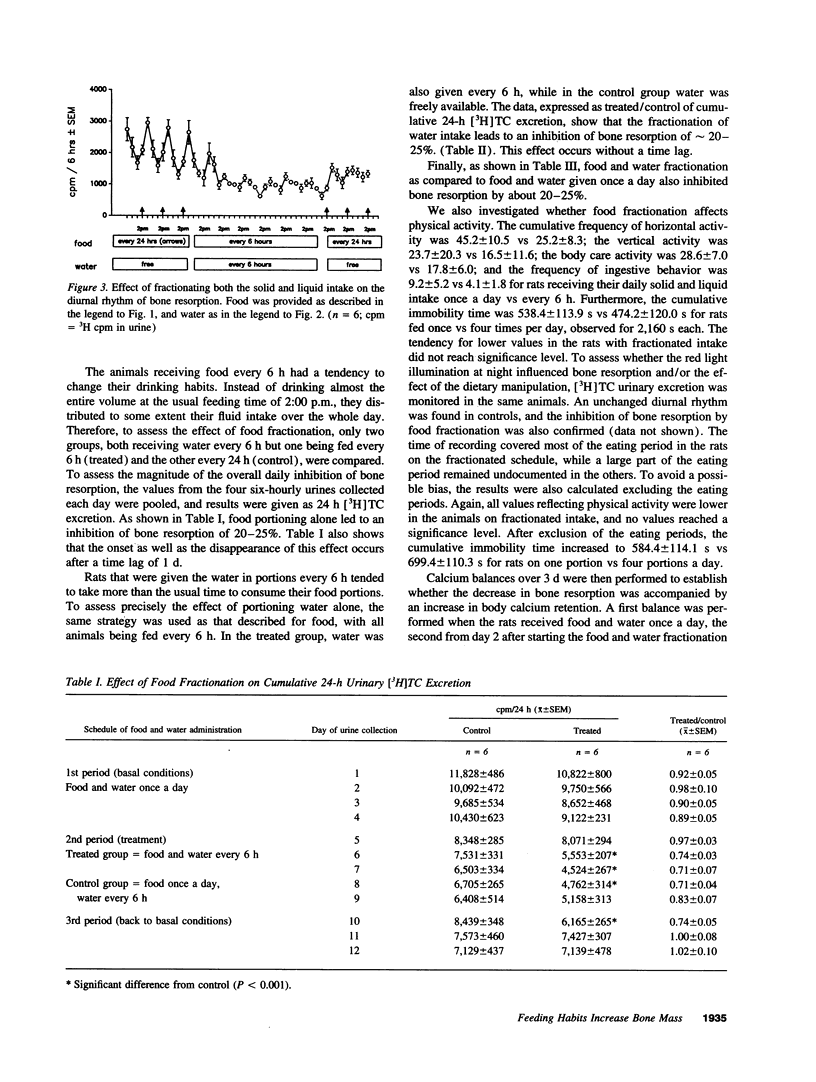
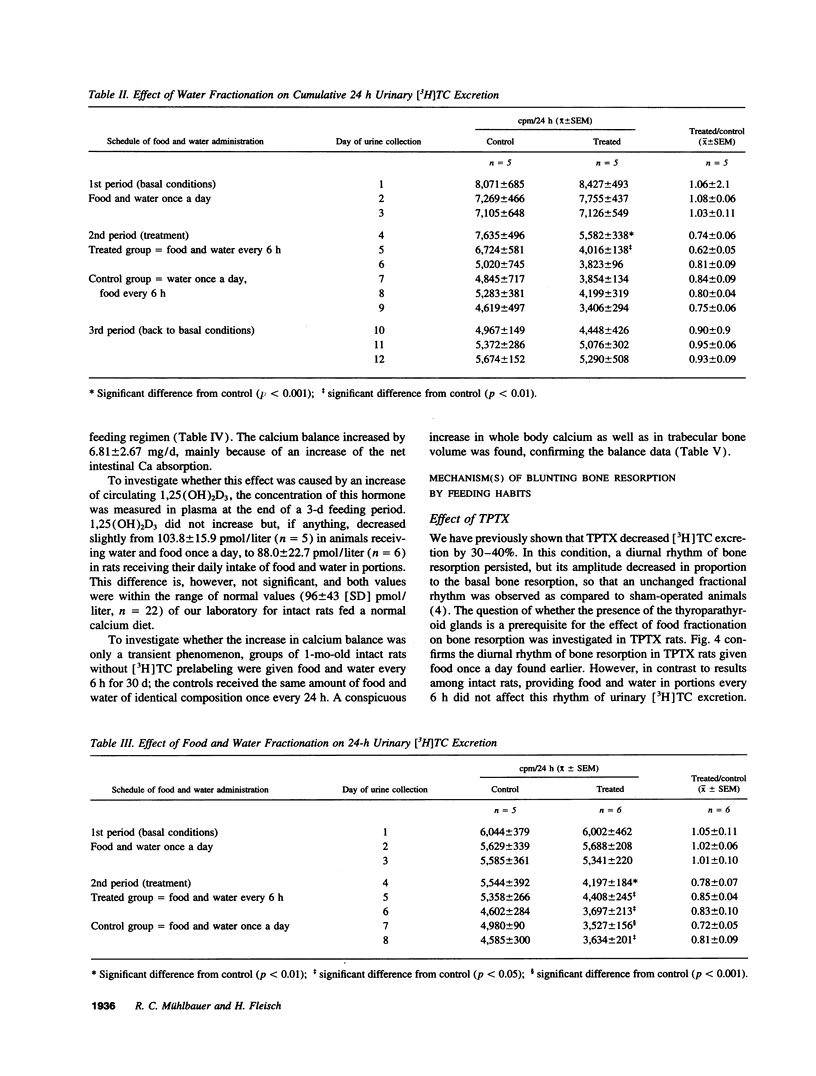
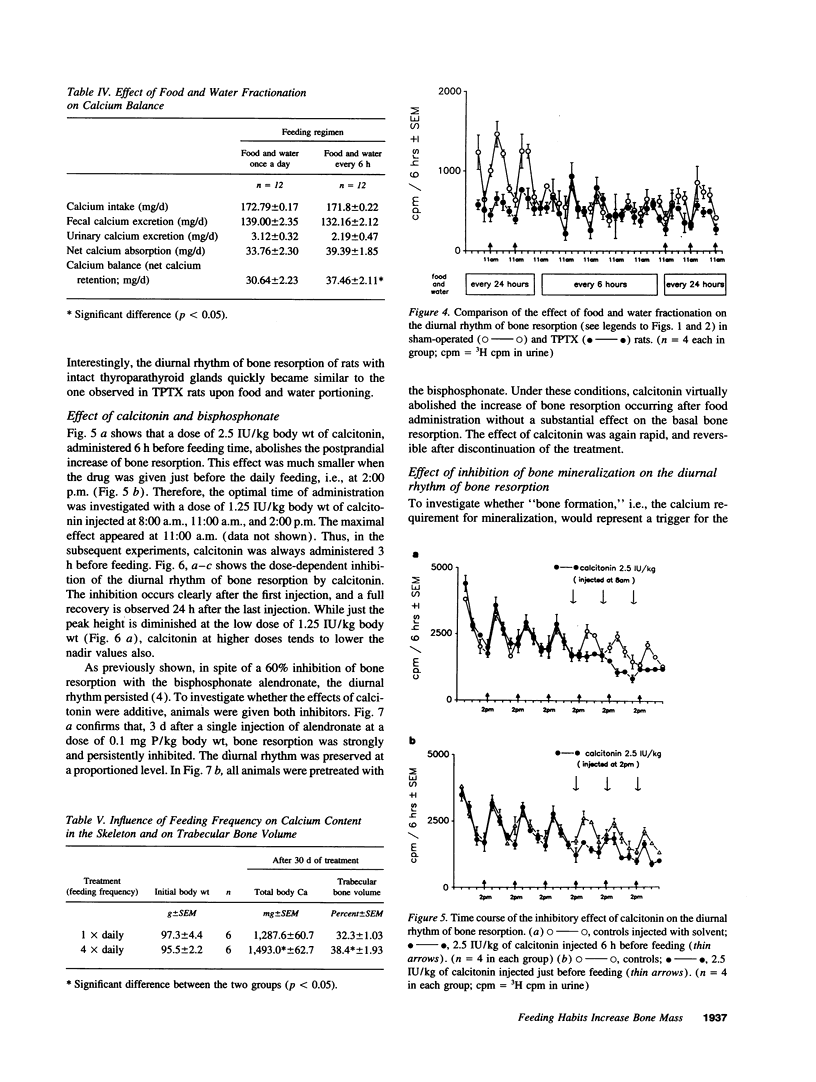
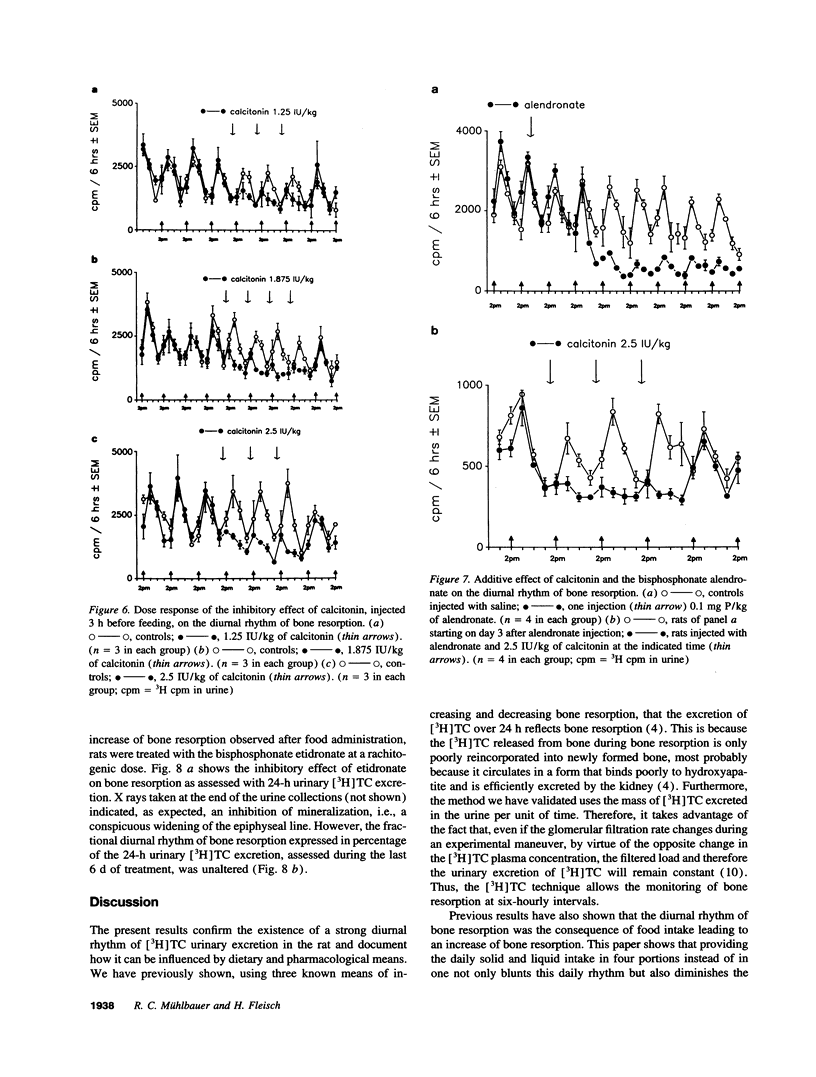
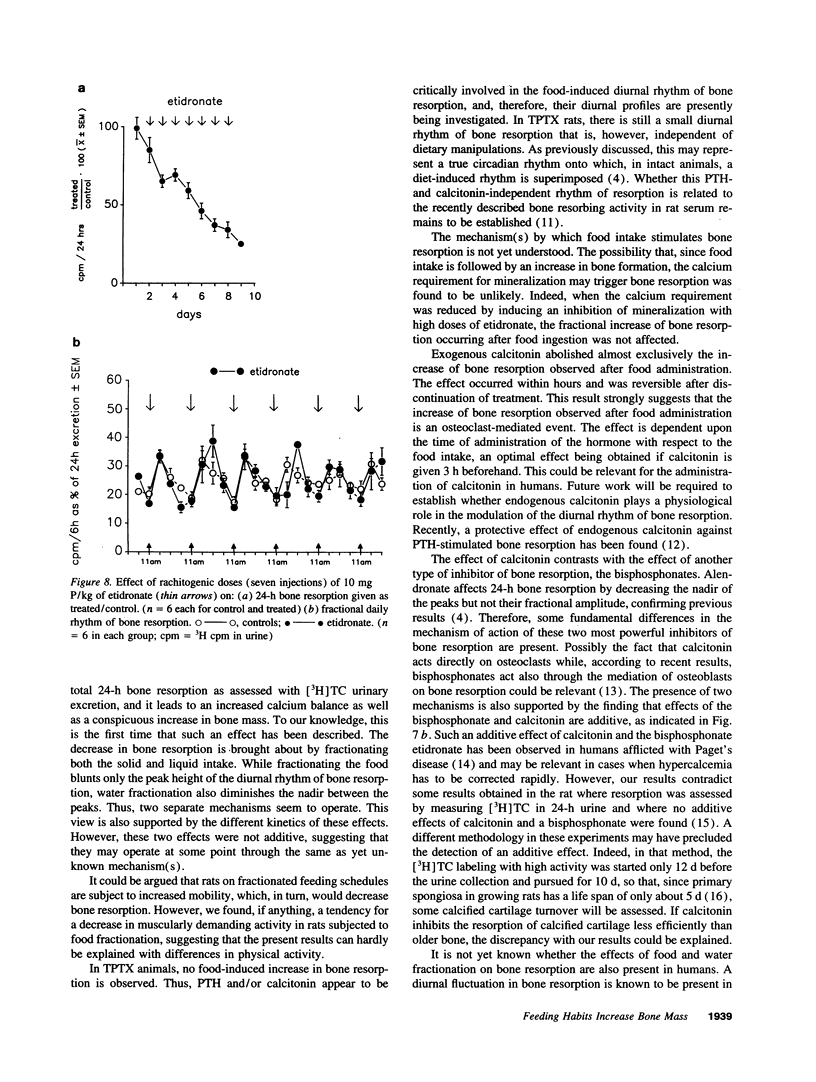
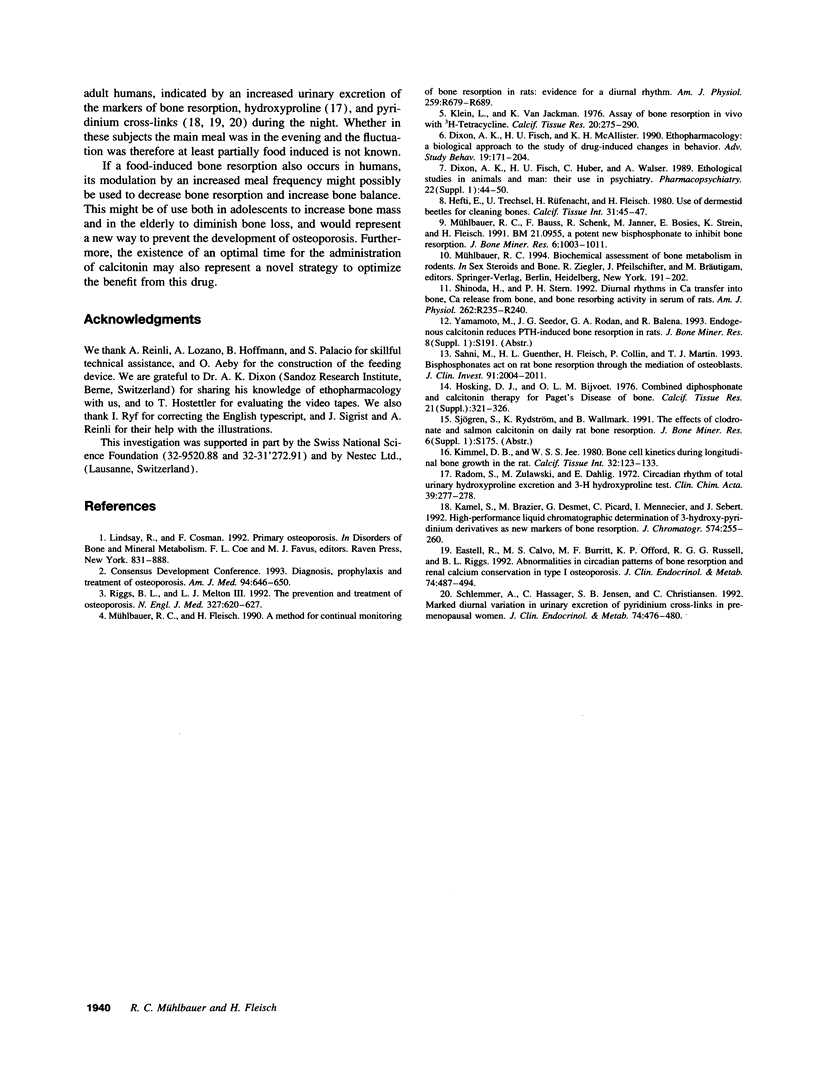
Selected References
These references are in PubMed. This may not be the complete list of references from this article.
- Dixon A. K., Fisch H. U., Huber C., Walser A. Ethological studies in animals and man, their use in psychiatry. Pharmacopsychiatry. 1989 Feb;22 (Suppl 1):44–50. doi: 10.1055/s-2007-1014624. [DOI] [PubMed] [Google Scholar]
- Eastell R., Calvo M. S., Burritt M. F., Offord K. P., Russell R. G., Riggs B. L. Abnormalities in circadian patterns of bone resorption and renal calcium conservation in type I osteoporosis. J Clin Endocrinol Metab. 1992 Mar;74(3):487–494. doi: 10.1210/jcem.74.3.1740481. [DOI] [PubMed] [Google Scholar]
- Hefti E., Trechsel U., Rüfenacht H., Fleisch H. Use of dermestid beetles for cleaning bones. Calcif Tissue Int. 1980;31(1):45–47. doi: 10.1007/BF02407166. [DOI] [PubMed] [Google Scholar]
- Hosking D. J., Bijvoet O. L. Combined diphosphonate and calcitonin therapy for Paget's disease of bone. Calcif Tissue Res. 1976 Aug;21 (Suppl):321–326. [PubMed] [Google Scholar]
- Kamel S., Brazier M., Desmet G., Picard C., Mennecier I., Sebert J. High-performance liquid chromatographic determination of 3-hydroxypyridinium derivatives as new markers of bone resorption. J Chromatogr. 1992 Feb 14;574(2):255–260. doi: 10.1016/0378-4347(92)80037-q. [DOI] [PubMed] [Google Scholar]
- Kimmel D. B., Jee W. S. Bone cell kinetics during longitudinal bone growth in the rat. Calcif Tissue Int. 1980;32(2):123–133. doi: 10.1007/BF02408531. [DOI] [PubMed] [Google Scholar]
- Klein L., Jackman K. V. Assay of bone resorption in vivo with 3H-tetracycline. Calcif Tissue Res. 1976 Jun 14;20(3):275–290. doi: 10.1007/BF02546415. [DOI] [PubMed] [Google Scholar]
- Mühlbauer R. C., Bauss F., Schenk R., Janner M., Bosies E., Strein K., Fleisch H. BM 21.0955, a potent new bisphosphonate to inhibit bone resorption. J Bone Miner Res. 1991 Sep;6(9):1003–1011. doi: 10.1002/jbmr.5650060915. [DOI] [PubMed] [Google Scholar]
- Mühlbauer R. C., Fleisch H. A method for continual monitoring of bone resorption in rats: evidence for a diurnal rhythm. Am J Physiol. 1990 Oct;259(4 Pt 2):R679–R689. doi: 10.1152/ajpregu.1990.259.4.R679. [DOI] [PubMed] [Google Scholar]
- Radom S., Zulawski M., Dahlig E. Circadian rhythm of total urinary hydroxyproline excretion and 3-H hydroxyproline test. Clin Chim Acta. 1972 Jun;39(1):277–278. doi: 10.1016/0009-8981(72)90336-1. [DOI] [PubMed] [Google Scholar]
- Riggs B. L., Melton L. J., 3rd The prevention and treatment of osteoporosis. N Engl J Med. 1992 Aug 27;327(9):620–627. doi: 10.1056/NEJM199208273270908. [DOI] [PubMed] [Google Scholar]
- Sahni M., Guenther H. L., Fleisch H., Collin P., Martin T. J. Bisphosphonates act on rat bone resorption through the mediation of osteoblasts. J Clin Invest. 1993 May;91(5):2004–2011. doi: 10.1172/JCI116422. [DOI] [PMC free article] [PubMed] [Google Scholar]
- Schlemmer A., Hassager C., Jensen S. B., Christiansen C. Marked diurnal variation in urinary excretion of pyridinium cross-links in premenopausal women. J Clin Endocrinol Metab. 1992 Mar;74(3):476–480. doi: 10.1210/jcem.74.3.1740479. [DOI] [PubMed] [Google Scholar]
- Shinoda H., Stern P. H. Diurnal rhythms in Ca transfer into bone, Ca release from bone, and bone resorbing activity in serum of rats. Am J Physiol. 1992 Feb;262(2 Pt 2):R235–R240. doi: 10.1152/ajpregu.1992.262.2.R235. [DOI] [PubMed] [Google Scholar]


